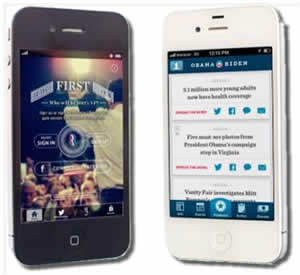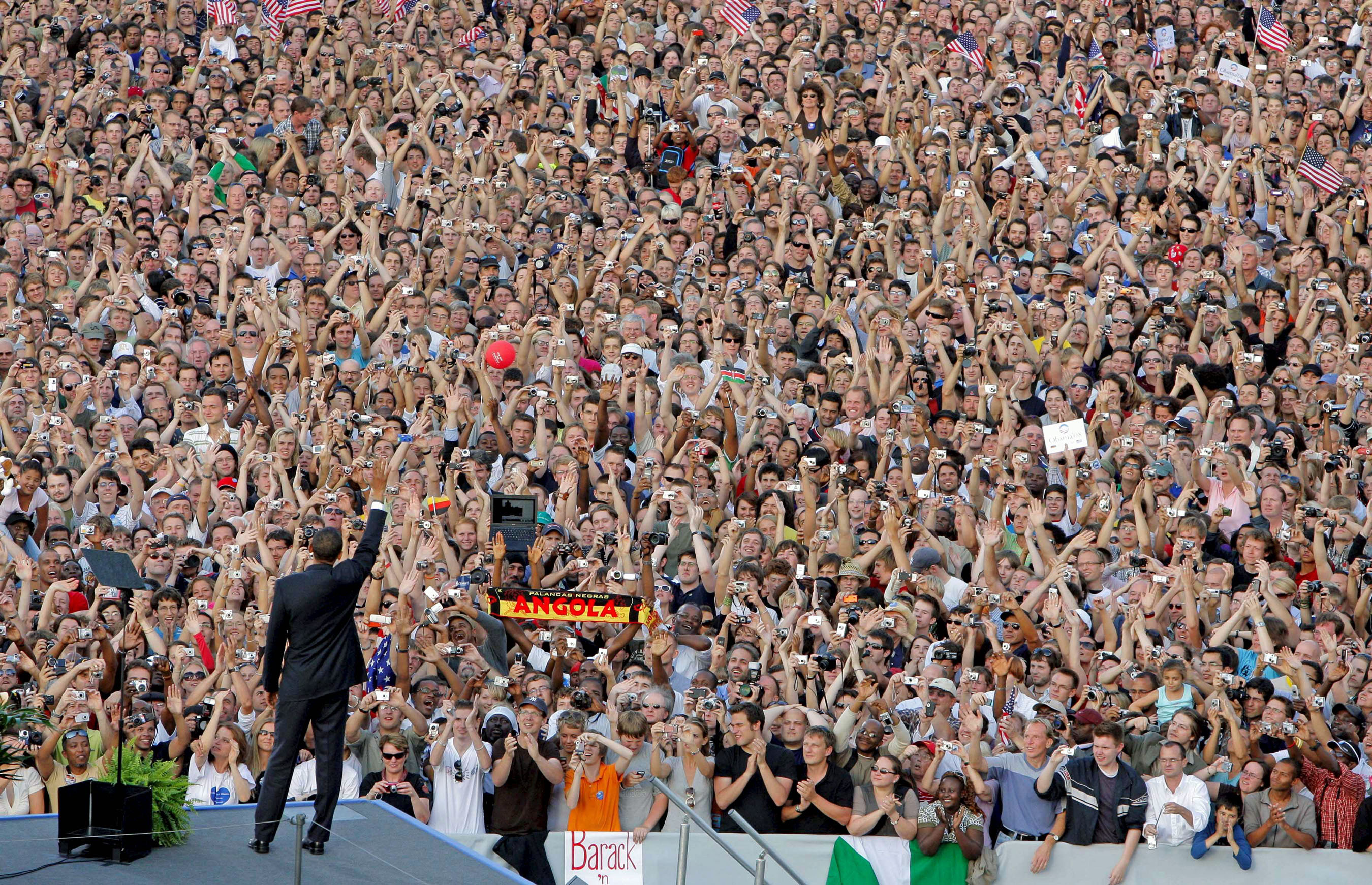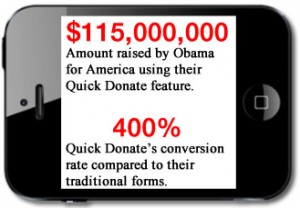What Obama (& Romney) can Teach You About Mobile (Part 3)
Please Note: This is the third of a three-part series analyzing the full spectrum of mobile tools used by both presidential campaigns.In Part 3, we will review how both campaigns leveraged mobile apps and text messaging..
Mobile Apps:
Like most of corporate America, both presidential campaigns became a little delusional with the potential of mobile apps. User retention trends tell a different story. According to research from Localytics, more than 40% of all mobile apps downloaded are use less than three times. If you’re lucky, your app is one of the 31% that’s open more than 11 times over a nine-month period.
Given the expense and time of developing mobile apps, their short shelf life and the promotional budget required to get them downloaded, these tools are not the answer for most campaigns (and companies for that matter). That said, both campaigns created their own and prove that point.
Romney did its best to update and Obama tactic from 2008. The campaign announced that it would be naming Romney’s running mate via a mobile app. That drove nearly 200,000 downloads in the first 48 hours. The campaign spent a sizable portion of their mobile advertising budget to drive further downloads. In the end, the media scooped the Paul Ryan choice, the campaign sent out an SMS first, and then the app pushed the announcement two days after it was old news. Following that debacle, future updates to the app were limited to social media integration, RSVPing for events and collecting donations – which was merely a link to a mobile webpage.
Obama’s mobile app fared better. Campaign actually released two apps: the first was little different than Romney’s attempt, but the second supported their field efforts. Users could register voters, join volunteer teams locally and even canvass their voters from the comfort of their own smart phone. The app was integrated with the campaign’s CRM and Google Maps to highlight potential voters within the volunteers’ area. With approval, it could even search through the user’s address book to find matches with their CRM. The field app was limited to smart phones and didn’t have a tablet implementation – a tragic mistake given the dramatic usage growth of tablets.
Mobile Messaging:
The popularity of SMS as mobile marketing tool certainly faded as others evolved. That said, text messaging still remain the most effective and cost-effective mobile marketing tool; just not the flashiest.
Unlike apps or mobile ads, 90% of mobile phones can accept SMS – a certain ubiquity. Text messaging volume continues to grow double digits year-over-year, especially with youth and voters of color who average over 50 text messages a day. And SMS open rates exceed 90%, which is nearly 10 times that of political e-mail messages.
Since its first use in 2008, SMS tools have advanced dramatically. Campaigns can now survey their supporters, set up peer-to-peer list building efforts and even engage in a one-to-one dialogues via SMS. Text messaging is the most effective way to get up-to-date information to supporters and send out GOTV reminders. Peer-reviewed research has shown that when used successfully, SMS reminders can increase the number of voters heading to the polls by 3 to 5% at costs that are less 10% that call banking.
Yet both campaigns fail to use mobile messaging effectively in 2012.
SMS didn’t even appear as a tool for the Romney campaign. Visitors to his websites had to dig into the fine print to find the opt-in information. Though their app offered an easy way for volunteers to opt-in, SMS subscribers across the country received little more than event updates and follow-ups e-mail campaigns.
In 2008, Obama built an SMS list of over 3 million, but let that list collect dust after his inauguration. His messaging innovations during his first election failed to follow to his reelection. Like Romney, Invitations to sign up for use SMS list were well hidden and never appeared in any political promotions either online, in print or in broadcast media, and SMS were used as reminders for prior e-mail campaigns.
Final Takeaways:
Both campaigns failed to use mobile apps and mobile messaging effectively, so here’s what we can learn:
- Most apps suck: While Obama’s field app had decent capabilities, the amount of time and effort that goes into developing a mobile app rarely provide adequate ROI for campaigns. Advocacy organizations could graduate to apps once they successfully use other mobile tools and understands their users’ needs.
- Don’t overlook SMS: While it might not be as flashy as other mobile tools, text messaging has ubiquity, advanced capabilities and is a must to any mobile marketing mix.

